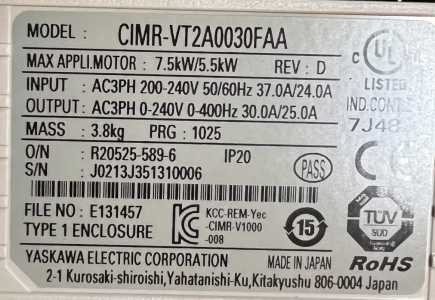- Joined
- Feb 25, 2021
- Messages
- 3,143
Ok, who is a NEC code guru? Any electricians? Haven't seen @Bi11Hudson posting recently ...
I was digging through the NEC after looking at load requirements (wiring sizes) supporting VFDs. Just chasing NEC concepts, and came across this one that is new in the 2017 NEC revision:
I'm guessing UL listing doesn't apply to modified equipment. Sounds like, at least on paper, that any machine repaired with other than factory supplied parts are therefore a NEC code violation. I'm guessing technically if you add a VFD you can't plug it into a NEC 2017 code building. (Fortunately my shop was built under NEC 2014 which was in effect for Indiana last year). Sounds like FAA requirements for airplane parts.
If so, I'd guess 99% of us including me are going to just ignore this, and I'm not trying to play safety police. Just seeing if any of the collective wisdom can shed any light on this. I'd guess 1/2 the stuff bought on Amazon or Ebay from overseas sellors isn't "listed". In practice I think NEC code applies when a residential building is inspected and approved for use/occupancy. Not to what the end user plugs in after the fact. (Commercial buildings may be subject to ongoing inspection) Anything after that is an argument for insurance company not paying?
I was digging through the NEC after looking at load requirements (wiring sizes) supporting VFDs. Just chasing NEC concepts, and came across this one that is new in the 2017 NEC revision:
- 422.6: All appliances operating at 50 volts or more shall be listed.
I'm guessing UL listing doesn't apply to modified equipment. Sounds like, at least on paper, that any machine repaired with other than factory supplied parts are therefore a NEC code violation. I'm guessing technically if you add a VFD you can't plug it into a NEC 2017 code building. (Fortunately my shop was built under NEC 2014 which was in effect for Indiana last year). Sounds like FAA requirements for airplane parts.
If so, I'd guess 99% of us including me are going to just ignore this, and I'm not trying to play safety police. Just seeing if any of the collective wisdom can shed any light on this. I'd guess 1/2 the stuff bought on Amazon or Ebay from overseas sellors isn't "listed". In practice I think NEC code applies when a residential building is inspected and approved for use/occupancy. Not to what the end user plugs in after the fact. (Commercial buildings may be subject to ongoing inspection) Anything after that is an argument for insurance company not paying?
Last edited:


